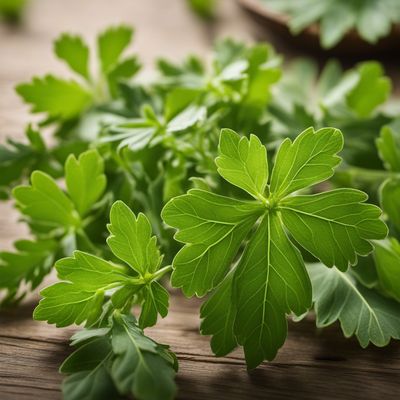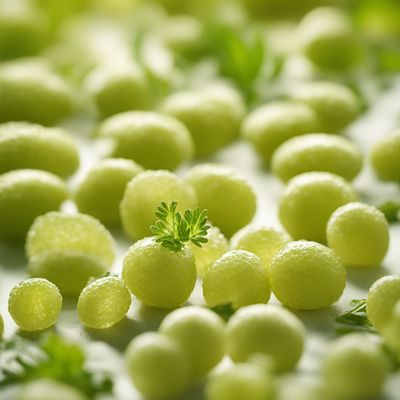
Ingredient
Borage, dry
The Vibrant Herb of Delight
Borage, dry, is characterized by its bright green leaves and delicate blue flowers. It has a fresh, cucumber-like taste with a hint of sweetness. The leaves are slightly hairy, and the flowers are edible, making it a versatile herb for both garnishing and cooking purposes.
Origins and history
Borage has a long history dating back to ancient times, where it was used for medicinal and culinary purposes. It is native to the Mediterranean region and has been cultivated in Europe for centuries. Borage is known for its association with courage and bravery, as its name is derived from the Latin word 'borago,' meaning 'courage.'
Nutritional information
Borage is low in calories and a good source of vitamin C, potassium, and calcium. It also contains beneficial compounds like gamma-linolenic acid (GLA) and antioxidants.
Allergens
Borage may cause allergic reactions in individuals who are sensitive to plants in the Boraginaceae family. It is advisable to exercise caution and consult a healthcare professional if you have known allergies.
How to select
When selecting dried borage, look for leaves and flowers that are vibrant green and blue, respectively. Ensure that the dried herb is free from moisture, mold, or any signs of discoloration. Opt for reputable brands or sources to ensure quality and safety.
Storage recommendations
To maintain the freshness and flavor of dried borage, store it in an airtight container in a cool, dark place. Avoid exposure to heat, moisture, or direct sunlight, as it can degrade the quality of the herb.
How to produce
Borage can be easily grown in home gardens or containers. It thrives in well-drained soil and requires full sun or partial shade. Sow the seeds directly in the desired location or transplant seedlings, and water regularly to keep the soil moist.
Preparation tips
Dried borage can be used in a variety of ways, such as infusing it in teas, adding it to soups, stews, and sauces, or using it as a garnish for salads and cocktails. It is also commonly used to make borage oil, which is known for its potential health benefits.
Culinary uses
Dried borage is commonly used in herbal teas, cocktails, and as a decorative element in salads and desserts. It is particularly popular in Mediterranean and Middle Eastern cuisines.
Availability
Borage is cultivated in various regions around the world, including Europe, North America, and parts of Asia. It is commonly found in Mediterranean countries such as Italy, Spain, and Greece.
More ingredients from this category » Browse all

Thyme, dry
The Essence of Thyme: A Versatile Herb

Angelica, dry
The Heavenly Herb: Unveiling the Secrets of Dry Angelica

Balm leaves, dry
The Soothing Herb: Balm Leaves

Basil, dry
The Fragrant Herb: Dried Basil

Lovage, dry
The Aromatic Herb: Lovage

Fennel, dry
The Fragrant Spice of the Mediterranean

Sage, dry
The Timeless Herb: Unveiling the Versatility of Dry Sage

Rue, dry
The Bitter Herb: Unveiling the Secrets of Dry Rue

Wintergreen leaves, dry
Nature's Minty Delight

Sweet cicely, dry
The Delicate Herb: Sweet Cicely

Woodruff, dry
The Fragrant Herb: Unveiling the Secrets of Dry Woodruff

Lavender, dry
The Fragrant Herb: Lavender